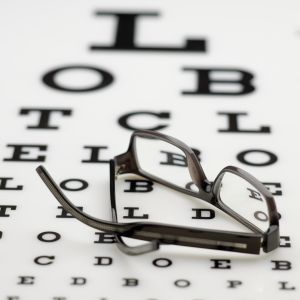
In Medical Malpractice cases in Georgia as I have discussed in my website, the Plaintiff must show that there was a Standard of Care in treatment, that the Defendant deviated from said Standard of Care, that the Plaintiff was damaged, and that the damage was caused by the Defendant’s Deviation from the Standard of Care.
This blog will discuss some of the questions asked, and why these questions are important, in a case where the Standard of Care is being assessed for Opthalmologic Care During an Eye Exam that Results in the Loss of Vision, Retinal Disease, Cataracts, and/or Glaucoma.
The following are some of the important questions to be asked to determine the Standard of Care, and if there was a Deviation from the Standard of Care, in said cases, and why each question is important:
1.) Was an Eye Examination Performed on the Patient?
Why is this important? Every one (1) to two (2) years, older patients should be scheduled for a comprehensive eye examination; some older patients with higher risk conditions such as diabetes mellitus may require even more frequent visits. These examinations are important since early recognition and treatment can help prevent vision loss in many patients and thus help to prevent and reduce disability from vision loss. Furthermore, involving a geriatric clinician in identifying and referring patients can help to decrease the morbidity associated with age related eye disease (a/k/a AREDs).
2.) Was a Visual Acuity Test Performed on the Patient?
Why is this important? If a patient presents with a visual complaint, a simple but vital part of the ophthalmologic examination is a test of visual acuity and this test is essential for all patients who have visual complaints.
3.) Was a Visual Field Test/Perimetry Test Performed on the Patient?
Why is this important? To measure for visual field defects, a visual field or perimetry test may be performed to measure for visual field defects; the ability of the eye to see straight ahead and to the side (i.e. peripheral vision). The visual field test is also used to test for macular diseases such as macular degeneration, and also for testing peripheral retinal disease such as retinal detachment or retinitis pigmentosa.
4.) Was a Slit-Lamp Examination Performed on the Patient?
Why is this important? An essential aspect of a complete ophthalmologic exam is a slit-lamp examination. This type of examination is especially useful for the evaluation of the anterior segment of the eye, and, in all ophthalmologic complaints needs to be a standard part of the examination.
5.) Was a Tonometry Performed on the Patient?
Why is this important? A tonometry determines intraocular pressure (i.e. IOP) since elevated intraocular pressure is associated with vision loss. The main indications of the procedure are to confirm a clinical diagnosis of acute angle closure glaucoma and to determine a baseline IOP after a blunt eye injury. This test can also be used to determine baseline IOPs in patients who have conditions such as iritis, or risk factors for open angle glaucoma.
6.) Was a Direct Ophthalmoscopy Performed on the Patient?
Why is this important? An ophthalmologic examination of the eye can reveal disease of the eye itself, or it may also reveal changes that are indicative of disease elsewhere in the body. This test needs to be performed in all patients with ocular pain, visual complaints, or ocular trauma.
7.) Was the Patient Diagnosed With or Suspected to have Any of the Following?
Why is this important? In the elderly, sudden painless loss of vision may be due to any or all of the following: A.) Progression of proliferative diabetic retinopathy or macular degeneration; B.) An acute retinal artery or venous occlusion; C.) Ischemic optic neuropathy; D.) Cerebrovascular accident; or E.) Amaurosisfugax. All of these conditions warrant urgent evaluation.
8.) Was the Visual Swing Test Performed?
Why is this important? For patients with cataracts, the swinging flashlight test is recommended since it is an objective method to diagnose a lesion of the anterior visual pathways and cataracts.
9.) Was Treatment Initiated after Diagnosis?
Why is this important? Early intervention for any eye disorder affords the patient the best prognosis.
10.) Was the Patient Advised to have Follow-up Visits?
Why is this important? Follow-up visits are imperative to determine if treatment is effective and appropriate under the circumstances or if not, then treatment needs to be adjusted accordingly.
At Julie A. Rice, Attorney at Law, & Affiliates, we are experts in these types of cases so if you or a loved one has been injured as a result of inadequate opthalmologic care, then please contact us as soon as possible for your free legal consultation. You may contact us by any or all of the following means: By phone at 770-865-8654, (813) 363-6664; By email at juliericelaw@outlook.com; By filling out the form on this blog page; And/or on our Website.
We are here to assist you and to make sure that you receive all of the just compensation that you deserve if you have been a victim of any type of medical malpractice. Take care, and we look forward to hearing from you soon.